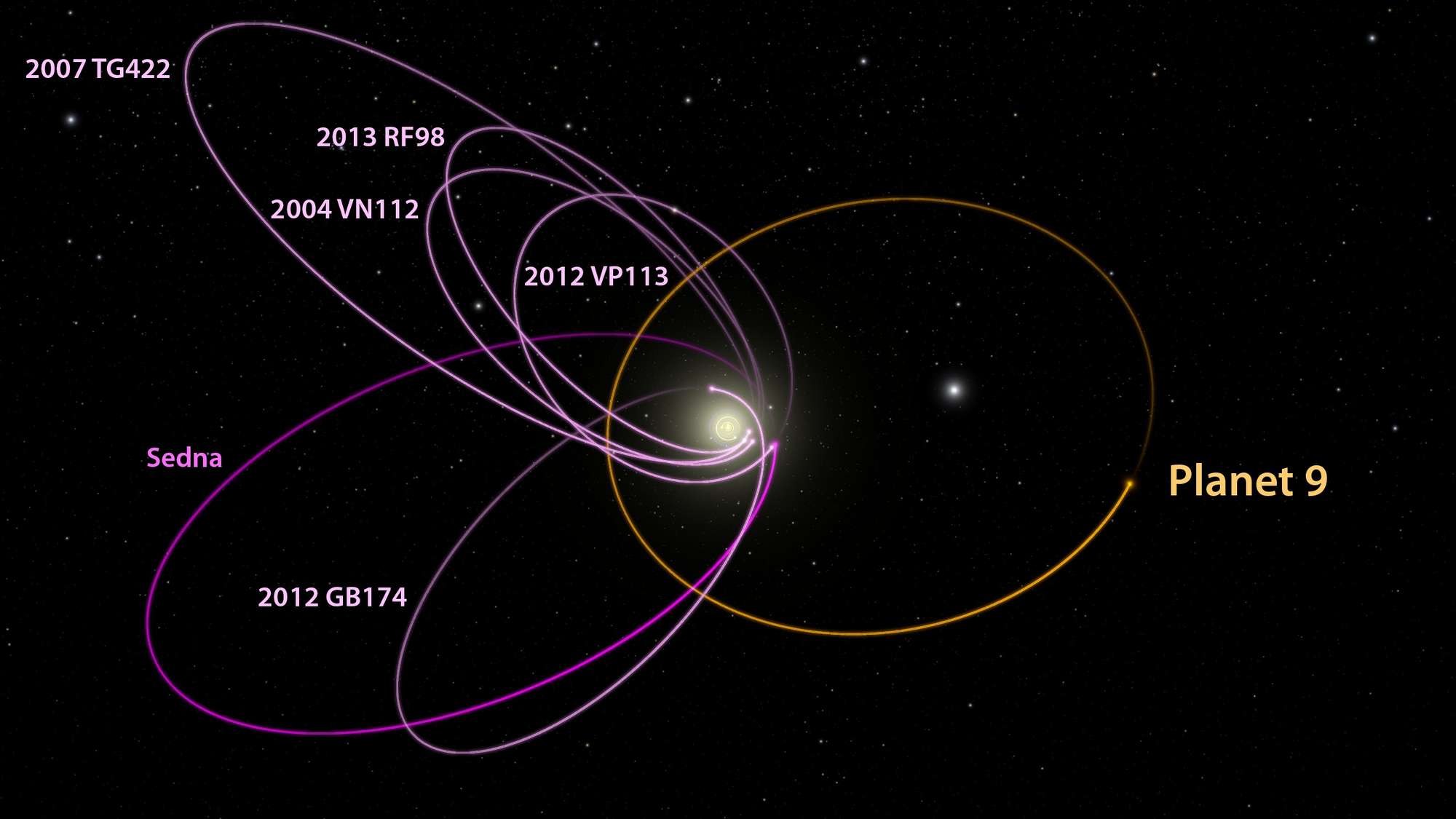
Evidence for a Ninth Planet

By Dr. Lisa Will, Resident Astronomer at the Reuben H. Fleet Science Center
You may have heard that there is evidence of a possible new ninth planet in our solar system, but what exactly does that mean? What evidence was found?
Researchers at the California Institute of Technology (CalTech) ran computer simulations to mimic observations of 13 specific Kuiper Belt objects that share a strange orbital feature—their elliptical orbits point in the same direction when in the same region of space. Their orbits are also tilted at the same angle with respect to the ecliptic, the plane in which the eight planets of the solar system revolve. Both phenomenon are highly unusual in the outer solar system and suggest an unknown gravitational force is pulling on these planets.
The research team proposed the existence of an unknown planet to cause these orbital features and ran their hypothesis through a set of computer simulations. The computer simulations worked!
Based on the simulations, the planet would have to be much larger than Pluto, larger than Earth, but smaller than Uranus or Neptune. The planet would be much farther out in the solar system than Pluto too. It would take 10,000 to 20,000 years for the planet to orbit the Sun once!
Do we know for sure that this planet exists? The successful computer simulations provide evidence for this ninth planet, but astronomers want direct observations. Our current best telescopes cannot see an object that faint because of its size and distance, but hopefully the next generation of telescopes will help us determine if this possible ninth planet is really out there.
For more information, read: https://www.caltech.edu/news/caltech-researchers-find-evidence-real-nint...
